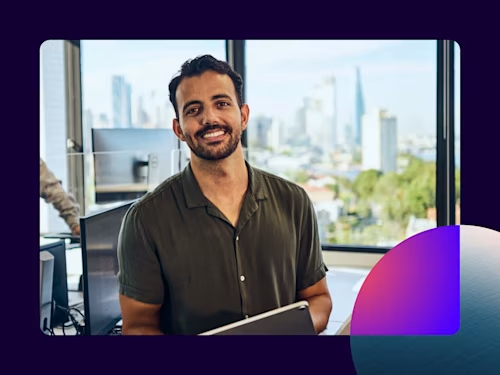
The evolution of legal processes
A webinar hosted by Lawyers Weekly on the evolution of legal processes explored the growing role that technology plays in day-to-day legal operations.

How far has the Australian legal profession come in terms of new technologies and processes? What are the challenges getting in the way of adoption of new technologies? And which technologies are proving most popular across the different sectors of the legal industry?
These and other questions were posed to a panel of experts in a recent webinar hosted by Jerome Doraisamy, Lawyers Weekly. Panellists included Mike Smith, Senior Solutions Engineer at Docusign; John Ahern, CEO of Infotrack; and Alex Ninis, Principle Lawyer at Macpherson Kelley.
Here, we provide a snapshot of their discussion. You can also watch the full webinar on-demand.
Steeped in tradition, but changing fast
For an industry as steeped in tradition as law, how hard is it for firms and practitioners to adopt new ways of working? Panellist Alex Ninis summed it up beautifully, saying “A slight tweak is quite a leap.” In other words, lawyers find it hard to change their ways.
That said, while the legal profession has been slower to change over the past decades, there have been exponential changes in recent years – as more and more lawyers realise the value of embracing technology to enable them to do their work more efficiently and effectively.
Lawyers are more likely to adopt a technology if it makes a substantial improvement to the way they work. It’s why eSignatures have taken off in a big way. With time being such a highly valued commodity in the legal profession, eSignatures are proving to save significant amounts of time and so are being embraced across internal legal teams and law firms big and small.
Changes are implemented incrementally
Where a technology has been identified as having the potential to deliver value to a law firm or in-house legal team, then the consensus is that the tech is tested internally first. Take Docusign. It might be used on confidentiality deeds for internal staff before rolling out to client-facing documents.
But once it is rolled out externally, it is embraced as a transformative way to deliver value. Clients of law firms – so familiar with modern ways of working – are highly receptive to the technological changes taking place. And, as the panellists reinforced, lawyers are ultimately service providers, so any way they can improve the service they give to clients is welcomed.
New technologies like Docusign don’t fundamentally change the way that lawyers interact with their clients. A lawyer will still pick up the phone to advise a client that a contract is ready. But what it enables them to do is say, “I’ve got your document ready for signing. I can email it to you right now, while I’m on the phone, and I can talk you through the contract. Then, you can sign it electronically today if you like. Or, I can post it to you … but you’ll just have to wait a few days before it arrives.”
It opens the door to an improved interaction between the lawyer and client.
How different sectors are changing
In-house corporate counsel roles and internal legal departments are embracing digitisation tools like Docusign to automate and standardise workflows – saving significant amounts of time and delivering the ability to handle higher volumes with compliance and auditability.
Larger law firms are starting to use technology as a differentiator to better interact with clients; and for smaller law firms, the cloud-based tools are proving a popular option to reduce reliance on slow mail networks and improve service delivery to clients.
Beyond service delivery, electronic solutions provide a secure audit trail, vastly improved visibility and the ability to adhere to strict compliance measures.
Future of legal technologies
Now to everyone’s favourite topic, crystal ball gazing. What’s on the horizon for legal professionals? Two words: AI and automation.
When it comes to AI, panellists were quick to stress that AI will not replace lawyers. What it can do, though, is help deliver the information they need to do their job faster.
For example, AI could play a huge role in helping law firms filter through contracts to find out if a clause in a contract has been triggered by an outside event. Instead of a paralegal reading through hundreds of contracts to find mentions of themes around a topic – say, bribery and fraud – AI is smart enough to search through all the contracts even if the specific language about bribery and fraud differs in each contract.
Every function that a lawyer doesn’t want to perform has the potential to be automated, freeing up their time to focus on service delivery. With all this on the cards, the future is bright for legal professionals.
Question time
At the end of the webinar, the floor opened up to viewer questions. From the legality of digital signatures to whether a digital fingerprint can replace a wet-ink signature, there was certainly some fascinating discussion to be had.
Watch the webinar now to find out more.
Docusign IAM is the agreement platform your business needs


